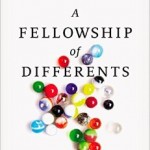[Adapted from a script I wrote for a video that IVP made for the Inhabit conference. My segment didn’t get used in the IVP video, but these thoughts are worth sharing here on the blog]
My friends at the Parish Collective often speak of the importance of parishes being rooted and linked. These two virtues show us two different ways that storytelling works in our local churches.
Storytelling is absolutely essential to the health and flourishing of local parishes. As we seek to be rooted, stories serve to shape our identity—they remind us who we are and how God is at work transforming us. As we seek to be linked, storytelling is a way of learning from what God is doing amidst churches in other places and other times. These kinds of stories from other local churches are particularly helpful for stretching our imaginations and energizing change in our local congregations.
Writing—along with the corresponding practice of reading—is a kind of storytelling. I’ve long been fascinated by the way the biblical writer of Hebrews uses storytelling in chapters 11—12. The writer tells all these amazing stories of Israelite faithfulness in chapter 11, and then chapter 12 turns the corner: “Therefore,” that is, in light of these stories, let us be challenged to grow deeper and more disciplined in our faith.
In this internet age with all the forms of telling and sharing stories that it offers – blogging, video-making, Facebook, Twitter, etc. – why write a book? For me, at least, writing a book was a medium that fit the stories of slow, attentive faithfulness that we wanted to share. Writing the book has required lots of focus, discipline, conversation and patience, all virtues that John Pattison and I maintain are essential to the Slow Church vision of healthy and sustainable congregations.
Just as the Slow Food movement has a preference for good food, one of the primary facets of “Slow Church” as John and I are defining it in our book is the challenge to focus less on the quantities in our congregations—as indicated by such things as attendance and offerings—and more on the quality of our faithfulness: growing deeper and more disciplined in our life together, as the writer of Hebrews suggests. Because it is in these stories of depth and discipline that our churches are inspired to be more mature embodiments of Christ in our neighborhoods, we do well to tell lots of stories as we pursue the renewal of our parishes and a slower, more faithful church.
Image: Creative Commons License via Wikimedia Commons













